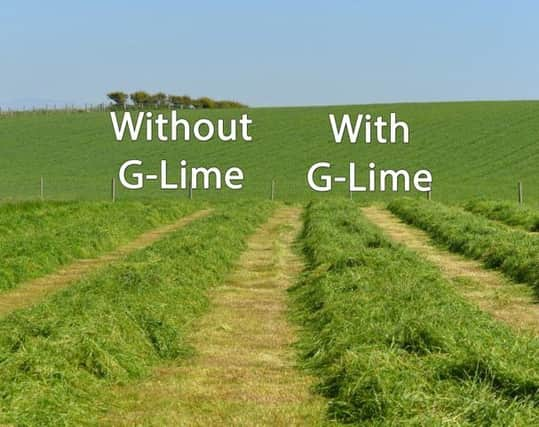Granular-Lime:Effective, efficient and easy to use


Granular-Lime and AgLime are produced from the same parent material: calcium carbonate. Calcium carbonate – in rock form in the quarry – is blasted, crushed, washed, dried, and ground. It is then screened in different degrees resulting in varying particle sizes.
AgLime generally consists of coarser particles whereas Granular-Lime consists of superfine particles. These superfine particles bind to form a granule which dissolves almost instantly in the presence of water.
Advertisement
Hide AdAdvertisement
Hide AdAs Granular-Lime and AgLime are made of the same material, they work in the same way to alter soil pH; but because Granular-Lime is so much finer than AgLime, less of it is required to get the same lift in pH, meaning Granular-Lime accomplishes the desired effect much faster than AgLime while using less product.
Granular-Lime is cost
effective
On a per tonne basis, Granular-Lime is more expensive than AgLime. However, when you take fineness and reactivity into consideration, far less Granular-Lime is needed to make the same pH adjustment that AgLime will make. Therefore, calculated per acre, Granular-Lime is often more cost effective than AgLime.
Granular-Lime is 97.9%
utilised
Many people will tell you that AgLime lasts longer than Granular-Lime. AgLime does have a percentage that stays in the soil, however that percentage sits unused. When a particle of AgLime is worked into the soil, it begins to react with the hydrogen ions in the soil solution around it, and pH near that particle rises. As this happens, the weaker acid soil solution is less able to penetrate to the centre of the AgLime particle. That particle then sits in the soil inert until the soil pH drops to the point when lime was first applied. However, at that low pH, the field was and is not productive.
By using Granular-Lime, 97.9% of the material applied reacts making Granular-Lime more efficient.
Granular-Lime can be
used to make large pH
corrections
Advertisement
Hide AdAdvertisement
Hide AdIt is difficult to accurately make large pH corrections. Farmers should be careful with AgLime recommendations requiring greater than two tonnes/acre to be applied. Amounts greater than two tonnes can cause over liming in the root zone which can cause similar nutrient uptake issues as that caused by acidic soil. Similarly, farmers should never apply more than 300kg of Granular-Lime in one application. Due to this restriction it can be difficult to make large pH adjustments in one dressing. However, Granular-Lime is easy to apply with your own equipment. Additional Granular-Lime may be stored on farm and applied to soil in subsequent dressings making it possible to make larger adjustments to soil pH with less risk.
Granular-Lime makes it easy to maintain correct pH levels.
AgLime requires specialist equipment to apply, making it difficult and time consuming to arrange the application. As such, lime has become an input applied to a field when it is no longer productive giving fields’ peaks and troughs in terms of productivity: ultimately this method is inefficient. If mass applications of product were efficient, fertiliser would be applied in the same method. With Granular-Lime, we can avoid this inefficiency. Once pH is corrected to proper levels, we can then use maintenance dressings to maintain pH, and keep fields productive for longer.
Granular-Lime is an effective, efficient, easy to use product and another tool in your arsenal to maintain field productivity and maximise your resources.